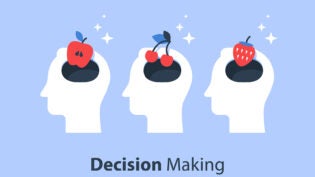5 Tips for Better Storytelling
By: Danny Iny

The emphasis on analytics driven digital advertising nearly destroyed storytelling’s role in marketing. However, with a new push in content marketing, storytelling is making a comeback.
After years of measuring clicks, impressions, and sales, marketers now measure effectiveness in engagement: likes, favorites, retweets, and shares. Marketers are learning to go beyond getting an audience’s attention and utilizing storytelling to engage an audience with the actual material.
As Matthew Turner from The Successful Mistake mentions, “every individual and every brand and every business has a unique story.” Strong narratives have an impact on sales and can trump data alone. Stories are an effective marketing tool and resonate better with customers than data alone because of the following attributes:
- Stories are easy to remember
- Stories provoke emotional response
- Stories are shareable (on and offline)
To illustrate, consider a University of Michigan study where participants were told that they had a terminal illness and offered a drug effective 90% of the time. The drug was then offered with a story about a single patient that took the drug that resulted in either a positive, neutral, or negative outcome.
With positive or neutral stories, 85-90% of the participants opted to take the drug. Unsurprisingly, when coupled with a negative outcome story, the participant chose the drug only 39% of the time.
Our innate ability to relate to stories over data can make or break sales.
Related Article: Storytelling, Storytelling, and More Storytelling
How can we tell a better story, then? We all know someone who tells a great story, but figuring out how to do that in a business context can be challenging. Below are five tips to help you tell your story and best market your company.
Tip #1: Clearly Define Your Identity
Most businesses solve a problem; however, articulating how is often the challenge.
For example, the founders of Coin, a device that consolidates all of your credit cards into a single device, needed to both convince customers that they wanted to find a replacement for multiple cards and that Coin was the right solution.
The challenge of defining your identity isn’t exclusive to early stage startups. Ranging from Radio Shack to Barnes & Noble to Myspace, well-established companies sometimes struggle to identify and convey their value proposition in light of changing market conditions.
Despite these challenges, a clearly defined identity is at the core of effective storytelling.
Foursquare’s identity was synonymous with the “check-in” and location-based services enabling it to hold its own against Facebook. Similarly before it grew nationally, Yelp was known for providing comprehensive restaurant reviews in San Francisco. Everyone in the Bay Area knew to check out Yelp before embarking on a new delectable adventure. And Reid Hoffman, founder of LinkedIn, agrees. He says, “construct an identity that signals to the world your core values and unique choices.”
Tip #2: Stories Need a Cause and Effect Narrative Structure
As attention spans shrinks, how can you keep your audience on the edge of their seat? The cause and effect nature of story and the revealing of certain pieces of information at strategic moments keeps audiences guessing and in suspense with heightened stakes at each turn. It also provides the perfect subconscious mechanism to remember a business’ message.
A simple interesting illustration is the Goldberg Machine, a series of interesting causes and effects recursively encapsulated in a larger cause and effect. Honda, State Farm, Panera, GoldieBlox, Purina, and more have utilized this effectively captivating their audiences through a series of structured, slow releases of information.
The evolution of marketplace businesses like Uber for example is very simple to digest.
- Car service is a challenge; the Uber app allows you to get car service with the touch of a button.
- Taxi service is a challenge; the Uber app allows you to get a taxi with the touch of a button.
- Transporting things in a city is a challenge; the Uber app allows you to get an SUV with the touch of a button.
Likewise, the challenge of syncing computers up with all of your up to date files as well as backing them up is being solved elegantly by having another folder on your desktop, your Dropbox.
Tip #3: Show Me, Don’t Tell Me
You can tell me how powerful your solution is, or you can show me how powerful it is. Which one do you think is more effective?
Companies understand that examples are much more powerful than empty statements. We see more case studies, content marketing, and use cases to back up any awards or statements the company makes.
It seems that there is a new celebrity testimonial daily for anything from acne treatment to weight loss programs, but there is a reason companies utilize spokespeople: testimonials work. According to a study by Zendesk 90% of customers say that positive testimonials influence their buying habits.
Furthermore, providing specific ways to use your product are very important as businesses are solving more and more niche problems and customers are too overwhelmed and busy to try and figure it out. Twitter and Pinterest, for example, provide step-by-step onboarding for new users to give them a head start into the community. Mobile and social games also walk you through step-by-step how to play the first few levels, especially if the game is very intricate.
Tip #4: Know Your Audience
Everyone has specific concerns or interests that are most critical to them. Tailoring your story to appeal to your audience is essential. Toyota knows this lesson well as it employs various marketing techniques to sell its Prius to different audiences. When marketing to environmentally conscious individuals, Toyota plays into the lack of carbon footprint linked to hybrid cards. But when marketing to millennial buyers, Toyota appeals to their desire for small, city-friendly cars and low-gas mileage.
In the online world, Foursquare noticed that they had two distinct audiences: those that used the app to “check-in” and those that used the app to search for local places. In order to cater to both groups more effectively, Foursquare did something never done before: they split their audience in half by creating another application: Swarm. Foursquare became a local search and recommendation platform while Swarm became the social media application that let users check-in and see what their friends were up to.
Tip #5: Be Vulnerable
Stories exploit the protagonist’s character flaw and their journey to overcome it. The protagonist in your story needs to be vulnerable, after all no individual or company is perfect, but acknowledging your flaws makes you more likable.
Showing your weaknesses but also demonstrating your strength to overcome is more likely to win you fans and customers than saying that you have the perfect solution for everything. Some of the biggest companies have shown their vulnerability and apologized for it including Apple, Netflix, and Dell.
In the ultra new world of wearable technology, user trust is important. Two companies demonstrated their humility by recalling some of their biggest products to establish trust with their loyal customers. Jawbone recalled their UP product when the product failed after a few months; they acknowledged their error and it plays in with their product evolution. Similarly, Fitbit recalled their watches on complaints of blistering and rashes from daily wearers. They remain the top selling, wearable activity tracker with 70% market share and the recall is another step in their story of exciting new wearable products worn 24 hours a day.
Telling a compelling story is an important part of building a business that truly connects with people. It also helps to understand your message and values as defined by your story. As new as digital advertising is, storytelling has been around since the invention of language! And the trick to effective marketing is simply to tell a good story driven by these five elements.
Do you use storytelling to convey your marketing message? What tips and tricks have you learned? Share your thoughts with us in the comments below!
Author: Roger Wu is the co-founder of sponsored content marketplace, Cooperatize. He also won a Webby Award, is a Guinness World Record holder, competed in eating contests and marathons, been shot several times on television, and writes incessantly about a variety of topics. Twitter: @rogerwu99/@cooperatize Google+: https://plus.google.com/116515909749189323309/posts














